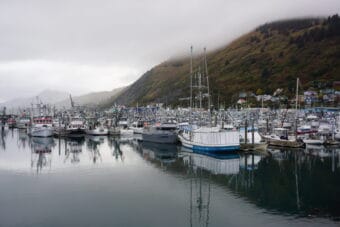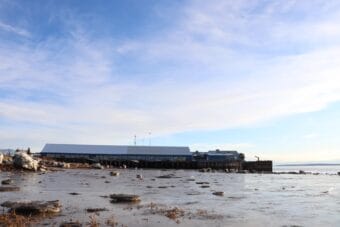
More than 58 million sockeye salmon returned to Bristol Bay this summer. It’s another in a series of enormous runs for the fishery. The commercial harvest was just as impressive. Bristol Bay’s fleet hauled in 39.5 million fish, the fifth-largest harvest on record.
But while the Bay’s run exceeded 50 million fish for the sixth year in a row — 46% above the 20-year average — many other parts of the state were far below their forecasts.
“When you take Bristol Bay out of the picture and look at sockeye harvests in Alaska, the non-Bristol Bay sockeye harvests this year were the lowest on record since 1976,” said Dan Leash, an economist with the McDowell Group.
Across all species, the value of the state’s commercial salmon season dropped more than 50% from last year — 56% below last year. The 2020 season was valued at $295.2 million, while last year was valued at $673.4 million. Harvests were also down by 44%.
“Sometimes when you have a low harvest year, the prices will rise. But that didn’t happen this year,” Leash said. “It was sort of a death by a thousand cuts in terms of the impact of the seafood on the harvesters this year.”
Southeast fisheries saw their worst salmon runs in more than four decades, and the commercial harvest there took a big dive this season.
“It’s been the mid-70s since we’ve seen a total harvest in Southeast Alaska this low,” said Andy Piston, a biologist with the Alaska Department of Fish and Game in Ketchikan
Piston said harvests were down not only for sockeye, but across all species — from chum to silvers to pinks. The chum harvest was the lowest since 1991, and the silver harvest was the lowest since 1977. According to Piston, the sockeye harvest of 458,000 was the second-lowest since the late 1800s and the lowest since 1975.
“It’s the lowest pink salmon harvest since 1976, and pink salmon are often the most abundant species in the catch down here. So that brought our total harvest of all species way down for this year,” he said.
Still, that’s not totally unexpected. Piston said surveys of the 2017 parent year for pink salmon showed low numbers, and sockeye and chum were low as well.
Many factors can affect salmon mortality. For Southeast pinks, Piston said trawl surveys used for forecasting suggest that lower survival in early marine waters might lead to lower returns — there just aren’t a lot of juveniles leaving fresh water. On top of that, he said, there might also be problems further out at sea.
“For some species, we’re also seeing indications that fish aren’t growing well out in the ocean,” he said. “For example, with sockeye salmon, you know, we collect scale samples from some of our stocks out here in southeast. And what we’ve seen in a lot of years since about 2015 is very little growth in their last year at sea.”
Meanwhile, Kodiak’s pinks did well, although the sockeye harvest was down from last year. Fishermen brought in more than 21 million pinks — more than three times that of 2018.
Copper River also had one of the weakest sockeye runs on record. Fish and Game closed the fishery after just a few openers. It met its escapement, but the commercial harvest was 92% lower than the average over the past decade.
In August, the Cordova City Council passed a resolution asking the state and the U.S. Secretary of Commerce to declare disasters for both the 2018 Copper River sockeye and king runs and the 2020 sockeye, chum and king runs at the Copper River and Prince William Sound.
The Chignik River had its worst run on record this year. It was 40% smaller than the disastrous run of 2018. Chignik’s runs over the past three years have been extremely low. This year, there were no commercial openers for sockeye, and the fishery didn’t meet its minimum escapement for its early or late runs.
“It was a very bad year. Folks out there really struggled, obviously, not just with the commercial fishery but with the subsistence as well,” said Ross Renick, an area management biologist at the Chignik Weir. “It was very difficult for folks to get fish in Chignik this year.”
The U.S. Secretary of Commerce this year allocated $10.3 million in relief funding to the Chignik fishery. The state is now working on the final draft of a plan to allocate that funding to Chignik fishermen, communities, and research.


